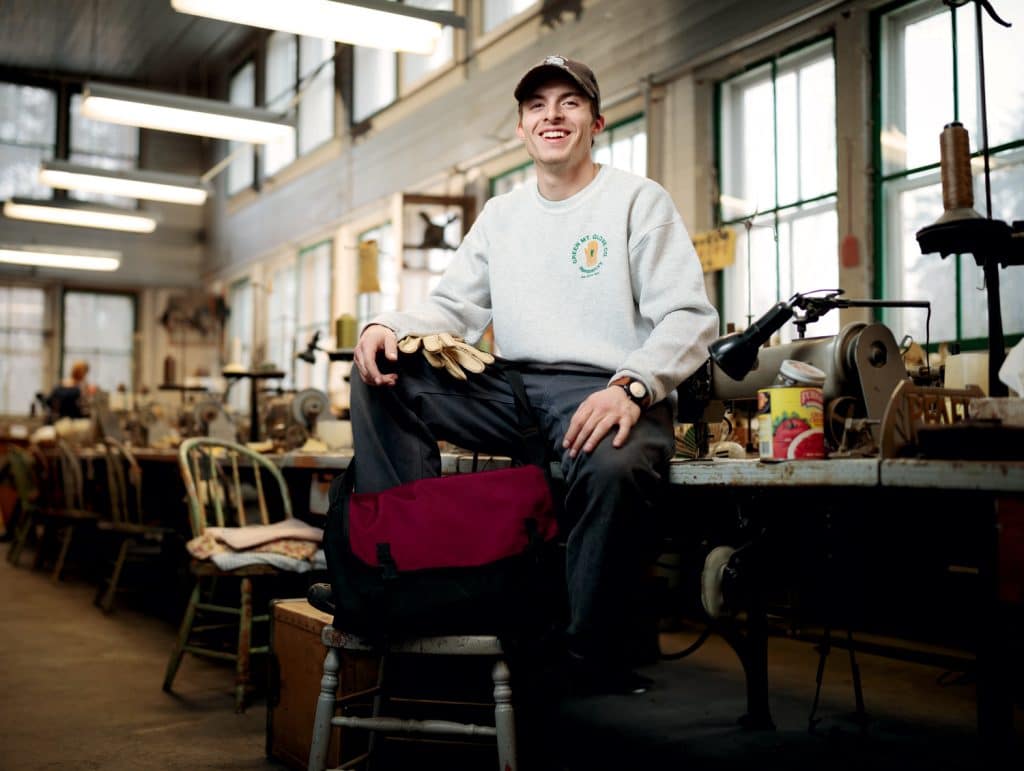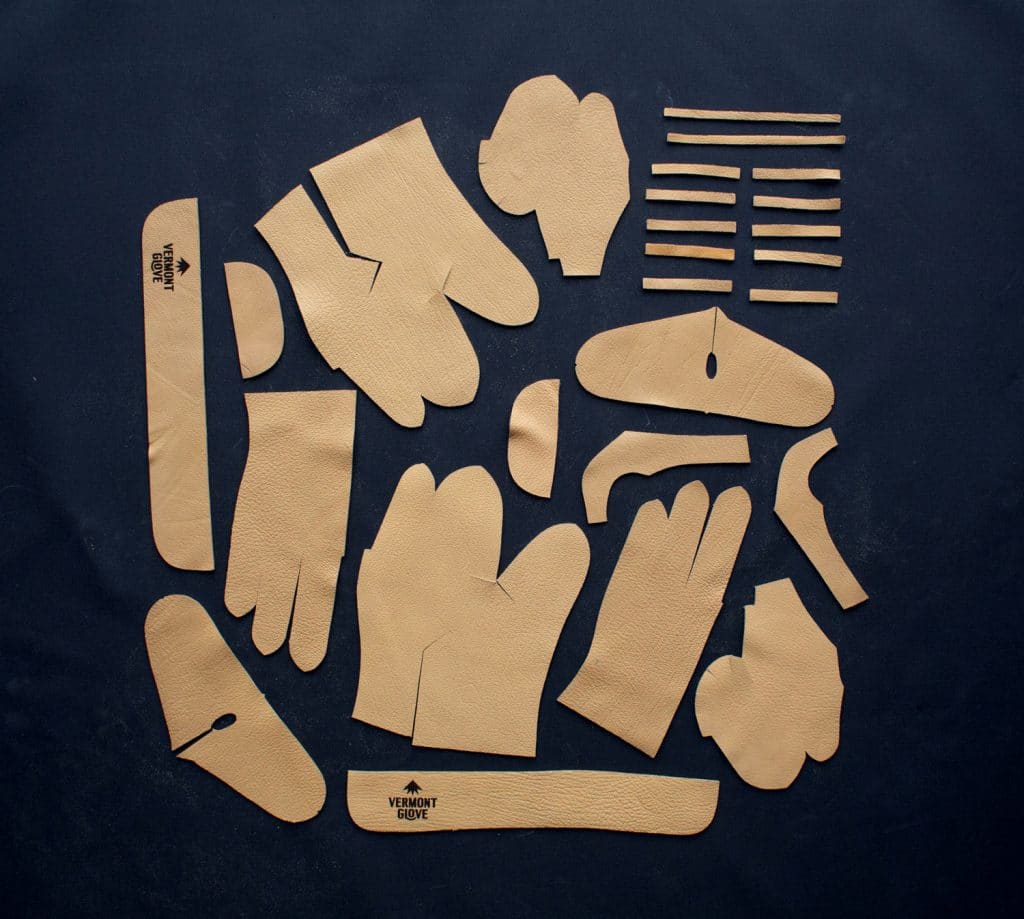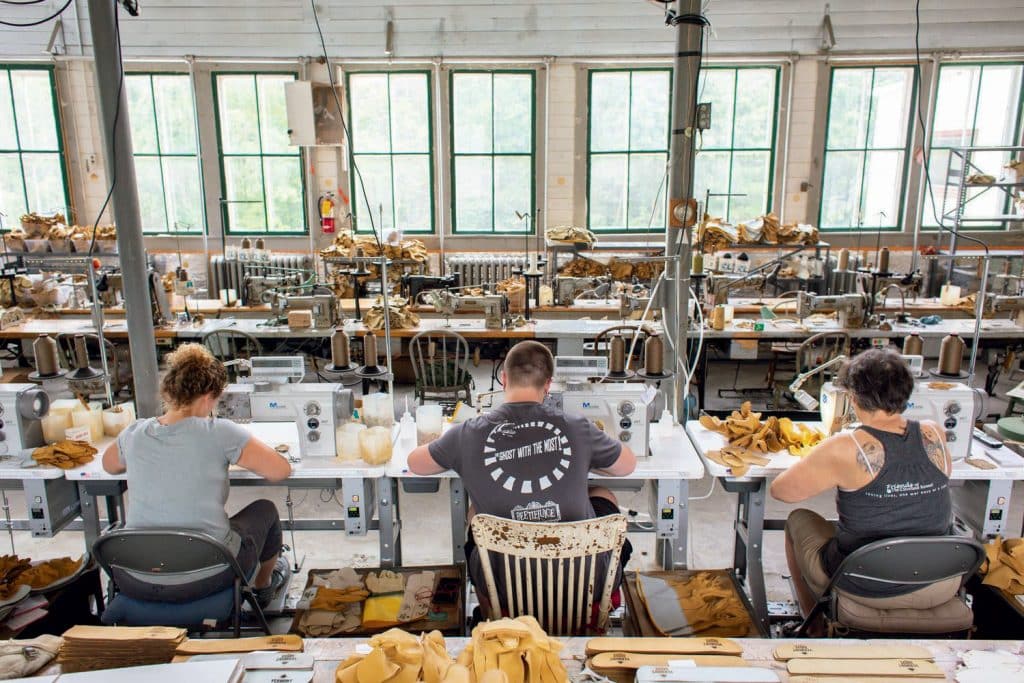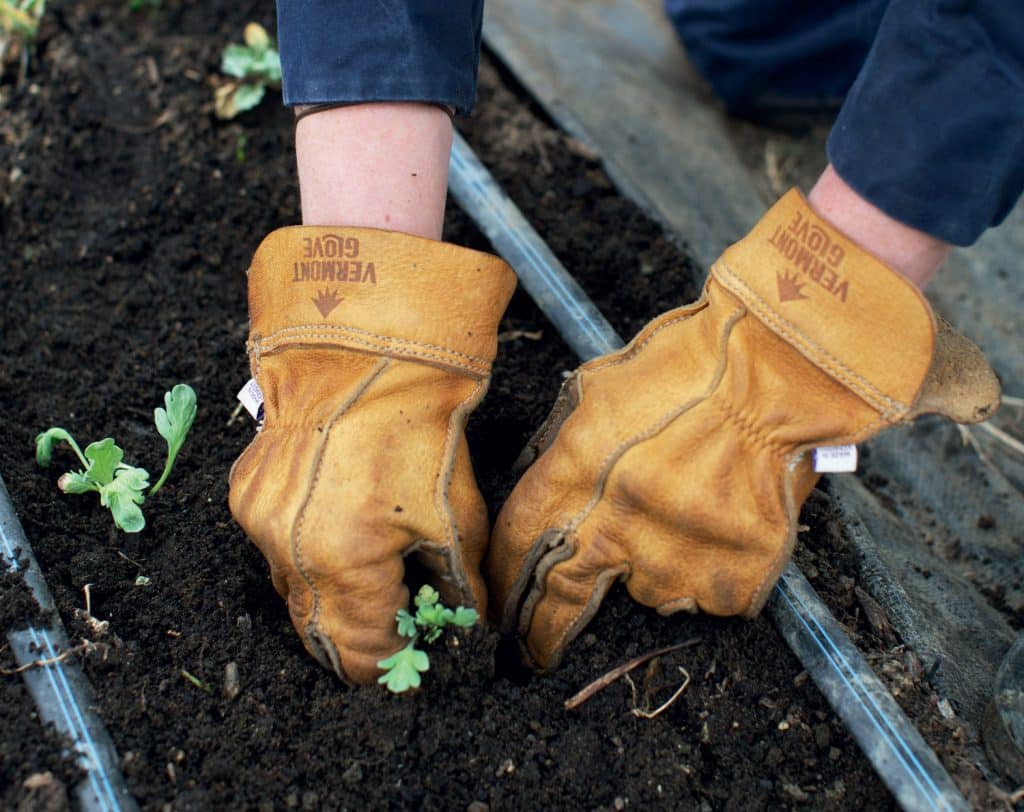Made In New England: Vermont Glove
How the century-old Vermont Glove is turning out a product that a lot of folks want to get their hands on.

The Vermont Glove finished product, after being thoroughly broken in.
Photo Credit : FarmrunWhen Sam Hooper was growing up on his family’s farm in Brookfield, Vermont, he worked alongside his parents and brothers, haying, cutting wood, slopping pigs, repairing fences, clearing snow—a multitude of chores all done by hand. The rugged labor took its toll on his work gloves (“I’d go through five pairs in just a winter,” he recalls), until one day he put on a Green Mountain–brand pair. They were meticulously handmade from goatskin, a craft honed and perfected by three generations of the Haupt family and their small company in the nearby town of Randolph. And that day is when this glove story begins.
“I went, Wow,” Hooper says. “I was floored by them”—by how comfortable they were, how supple and flexible, and so durable that he could not wear them out. Hands down, they were unlike any he had ever worn.
Hooper eventually went off to college in Connecticut. Upon graduating in 2016, he returned home to work in the marketing department of Vermont Creamery, which was founded by his mother, Allison, and Bob Reese, and known nationwide for its butter and its specialty cheeses made from cow and goat milk. Soon afterward, he learned that Kurt Haupt Jr., the third generation to own Green Mountain Glove Company, was preparing to retire.

Photo Credit : Ben DeFlorio
The company was struggling. A few years earlier, a major garden supply retailer that featured Green Mountain work gloves as a top-of-the-line product had been sold to a national corporation, which chose to offer cheaper, mass-produced gloves. Even the company’s core business—protective gloves made specifically for lineworkers, a product that needed to be flawless to ensure their safety—was under increasing pressure from overseas manufacturers. One of the country’s last local glove makers was fighting to survive.
Hooper, then 23, had long been fascinated by the manufacturing process. At the creamery he had seen raw milk become 4 million pounds of products sold to people who loved them. Green Mountain Glove Company had been in Vermont since 1920, and unlike young entrepreneurs who flock to start-ups, Hooper had this feeling, this optimism, that he might be able to stitch his ambition and vision to its existing legacy. In the summer of 2017, he went to see Kurt Haupt.
“I asked to be an apprentice,” Hooper says. “I wanted to know every step of the process that’s been perfected the Haupt way…. I asked Kurt, ‘How did you learn?’ He told me that one winter he needed gloves, and his father said, ‘Fine. I’m setting you up at this machine. Just get used to following the material. It takes a lot of time as you graduate to the next step.’”
For six months, Haupt and his daughter, Heidi, taught Hooper the intricate steps to make the best work gloves in the world, and also why each step mattered. And Hooper kept graduating to the next one.

Photo Credit : Farmrun
He learned why the fibers in goatskin made it both supple and tough; how to look for the slightest imperfections in the leather; how to select and cut sections for thumbs, for fingers, for the back; why they sewed seams on the outside (so there would be more finger space inside); how to do the special double seams and the tricky thumb attachments. He also learned that the incessant clatter of the company’s sewing machines from the 1940s and ’50s was the music of skilled sewers, some of whom had worked on the machines longer than he had been alive.
By the end of his apprenticeship, Hooper could make a glove that would pass as a Haupt. At night he did market research, figuring out whether he could—or should—make the leap from student to owner. He decided yes, and in early 2018, Hooper became the first person outside the Haupt family to own the company. Heidi Haupt stayed on as operations manager and sewing supervisor, as well as keeper of institutional memory.
Hooper knew the challenges. For one thing, the company’s factory was showing its age. Driven by an environmental ethic, he converted the coal burner to wood pellets, retrofitted the building with its first layers of insulation, and added solar panels. Within two years he had created a net-zero user of power.
He also needed to expand the customer base well beyond the time-honored utility worker. “We can’t lose sight that we make gloves for people where it’s life and death that they are made right,” he says. “The fact that we make gloves for utility lineworkers gives us leverage: ‘These gloves are made for people who trust their lives to them. Now they are for you.’”

Photo Credit : Farmrun
His most delicate decision was to rebrand the entire line: Green Mountain Glove Company became Vermont Glove. “It was a bit scary,” Hooper admits. “They had a 100-year-old heritage. I did not want to offend the Haupt family. That name represented four generations of the best glove makers in the world. But I got their blessing. It was the right time, if we were going to be widely known to consumers and not just utility workers.
“And when you ask people outside New England where the Green Mountains are, many don’t know. Vermont has cachet—you aspire to its lifestyle. We felt being here for a century making these gloves gave us clout to use the name.”
But some traditions remained. For instance, many glove styles still bear names that read like codes, such as the most popular all-purpose glove, the AG47R0. “I have no idea where that name comes from,” Hooper says. “But it doesn’t matter. It’s always been that name. It’s kind of cool, really.”

Photo Credit : Farmrun
And so, sometimes the young lead the way. The workforce has expanded, while the number of gloves that leave the factory each month is now more than 1,300 pairs. “But we have to be careful we don’t grow too fast,” he says.
Today, at age 30, Hooper works 80 to 90 hours a week. He lives in an old hunting camp on his family’s 67-acre homestead. He still works outdoors as often as he can. Still works with a pair of gloves made just down the road, as comfortable and as strong as the first ones that made him go Wow.
“We think about who we are, our value system,” Hooper says. “It does matter. We are time-tested. We are still here. That is a testament.” vermontglove.com
Mel Allen
Mel Allen is the fifth editor of Yankee Magazine since its beginning in 1935. His first byline in Yankee appeared in 1977 and he joined the staff in 1979 as a senior editor. Eventually he became executive editor and in the summer of 2006 became editor. During his career he has edited and written for every section of the magazine, including home, food, and travel, while his pursuit of long form story telling has always been vital to his mission as well. He has raced a sled dog team, crawled into the dens of black bears, fished with the legendary Ted Williams, profiled astronaut Alan Shephard, and stood beneath a battleship before it was launched. He also once helped author Stephen King round up his pigs for market, but that story is for another day. Mel taught fourth grade in Maine for three years and believes that his education as a writer began when he had to hold the attention of 29 children through months of Maine winters. He learned you had to grab their attention and hold it. After 12 years teaching magazine writing at the University of Massachusetts-Amherst, he now teaches in the MFA creative nonfiction program at Bay Path University in Longmeadow, Massachusetts. Like all editors, his greatest joy is finding new talent and bringing their work to light.
More by Mel Allen

